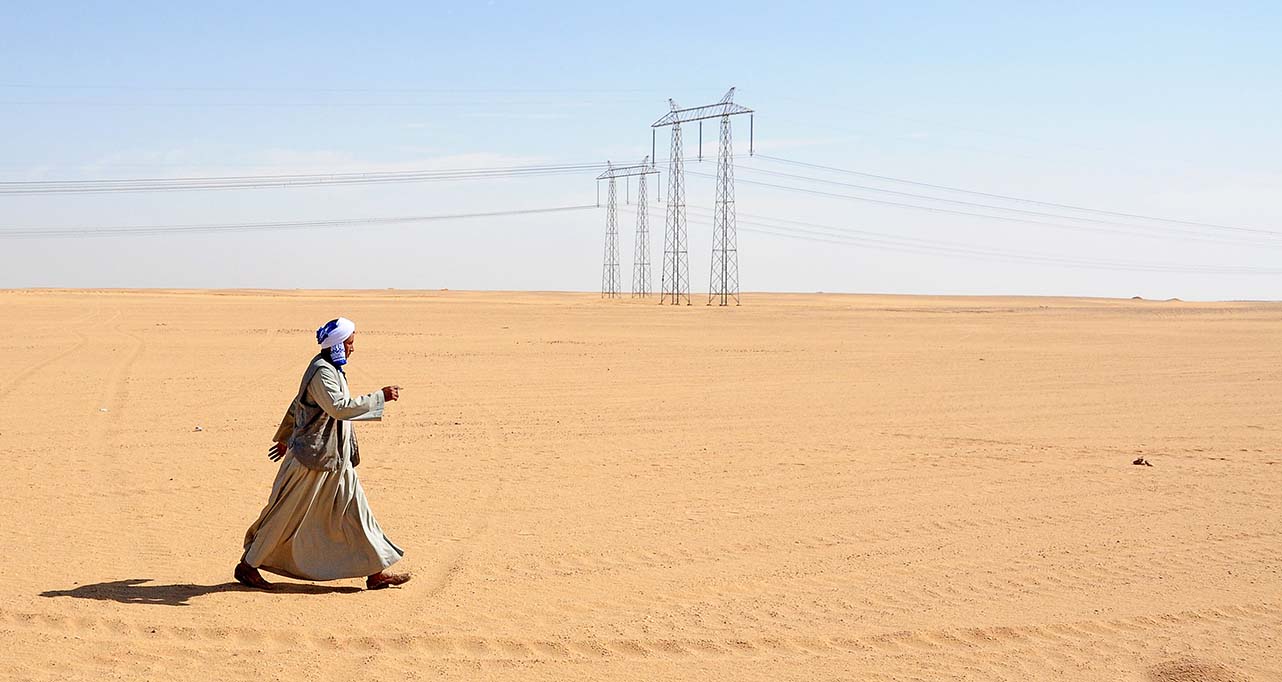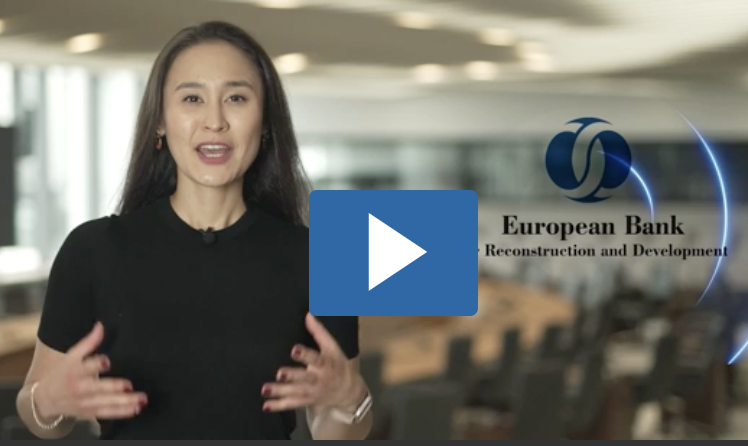These cookies cannot be disabled. They are essential for core functionality in ebrd.com to ensure a seamless and secure experience.
GET 2021-25

The EBRD's GET 2021-25 adopts a systemic approach to supporting the transition to resilient, low-carbon economies. It does this by:
(i) aligning all operations with the objectives of the Paris Agreement
(ii) enhancing policy engagement for the development of long-term low-carbon strategies and the greening of financial systems
(iii) scaling investments across a set of environmental, climate mitigation and resilience priorities.
The EBRD has set two ambitious targets as part of GET 2021-25. Over this five-year period, the Bank aims to increase green financing to more than 50 per cent of its annual business volume and achieve a net reduction in greenhouse gas (GHG) emissions of 25 to 40 million tonnes.
The GET approach uses the EBRD’s full range of financial instruments and policy dialogue. We also work closely with donors such as Climate Investment Funds, the European Union, the Global Environment Facility, the Green Climate Fund and other bilateral donors to mobilise climate finance for our clients.
Green finance attribution of EBRD investments
The EBRD has made supporting the green economy transition one of its strategic priorities. Central to this is a commitment to delivering an ambitious level of green finance investment, defined as financial flows that support activities contributing to climate change mitigation, climate change adaptation, nature and other environmental goals.
The EBRD’s methodology for green finance attribution sets out how the Bank determines whether or not EBRD finance should be classified as green, how to estimate the outcomes of green finance, and how to define plans formonitoring the delivery of those outcomes.
The methodology has four parts:
- the qualifying principles for green finance attribution (Section 2)
- the green finance attribution process (Section 3)
- specific guidance depending on the green impact objectives targeted (Section 4), and
- specific guidance depending on how the finance is structured (Section 5).
Supplementary information relevant to green finance attribution is set out in the annexes: outcome indicators relevant to green finance (Annex 1) and the EBRD protocol for the assessment of greenhouse gas (GHG) emissions (Annex 2).
The methodology supersedes the previous “Technical Guide – Implementing the Green Economy Transition” and its annexes. It was updated in August 2025 and it is currently available for public comment.
The EBRD and the Paris Agreement
The Paris Agreement was adopted at COP21 in Paris with a goal of “holding the increase in the global average temperature to well below 2°C above pre-industrial levels and pursuing efforts to limit the temperature increase to 1.5°C above pre-industrial levels”. It also aims to strengthen countries’ ability to adapt to the impact of climate change. All of the economies where the EBRD invests have ratified the Paris Agreement, and the agreement also has the support of EBRD shareholders.
Since January 2023, all new EBRD activities have been aligned with the mitigation and adaptation objectives of the Paris Agreement. The EBRD helps the economies where it invests to meet their goals and commitments under the Paris Agreement using its full range of investment and technical assistance activities. This stems from the Bank’s GET 2021-2025 approach.
The EBRD has worked with other multilateral development banks (MDBs) to ensure a harmonised approach. This joint MDB approach is based on six building blocks, seen as the core areas for alignment with the objectives of the Paris Agreement:
- alignment with mitigation goals
- adaptation and climate-resilient operations
- accelerated contributions to transition through climate finance
- strategy, engagement and policy development
- reporting
- alignment of internal activities.
MDBs have worked intensively together across all six building blocks to develop common principles and methodologies and apply them to their own operations. These principles provide a framework enabling MDBs to adopt a common technical approach to transition finance. The EBRD’s own approach has been informed by these principles.
EBRD activities and Paris alignment
All EBRD activities are aligned with the objectives of the Paris Agreement – covering all of our investments, policy dialogue and internal operations. The EBRD’s methodologies and approaches for Paris alignment are publicly available.
Methodology used to align EBRD investments with the Paris Agreement
The Paris alignment of the EBRD’s financial flows is anchored in Article 2.1(c) of the Paris Agreement, which commits signatories to make "finance flows consistent with a pathway towards low greenhouse gas emissions and climate-resilient development". Thus, the alignment of finance relates to both the mitigation and adaptation goals of the Paris Agreement. In putting its Paris alignment commitment into practice, the EBRD is guided by the 1.5°C goal.
The EBRD has set out how it will determine whether or not an investment or technical cooperation activity that the Bank might finance is “aligned” or “not aligned” with the mitigation and adaptation goals of the Paris Agreement. This relates to the first and second building blocks of the MDBs’ framework for alignment with the objectives of the Paris Agreement.
This methodology is in three parts:
(i) directly financed investments covering projects that involve specific capital expenditure
(ii) indirectly financed investments in cooperation with partner financial intermediaries, whereby EBRD finance is extended to financial intermediaries, which then finance a set of sub-transactions for end beneficiaries (through sub-projects or sub-investments)
(iii) other types of financing used by the EBRD that are not covered by (i) or (ii).
For each element, the methodology sets out how the EBRD will determine whether activities the Bank might finance are “aligned” or “not aligned” with the mitigation and adaptation goals of the Paris Agreement. The scope of the methodology ensures that there is a clear approach to alignment for all project types, covering the full suite of financial instruments and types of financing that the Bank could use.
In developing its approach in the course of 2021 and 2022, the Bank consulted widely – including through two public consultations – and received feedback covering all aspects of the methodology. The methodology was updated in March 2024, followed by a round of public consultation on the revised version.
Approach to the Paris alignment of the EBRD’s internal activities
The EBRD has established an approach to the Paris alignment of its internal activities. This relates to the sixth building block of the MDBs’ framework for alignment with the objectives of the Paris Agreement.
This covers the EBRD’s own operations (related to buildings, mobility and procurement), Treasury activities and the Bank’s retirement plans. It also sets out the governance arrangements for the Bank’s implementation of its Paris alignment commitment, in line with the EBRD’s broader governance structure.



